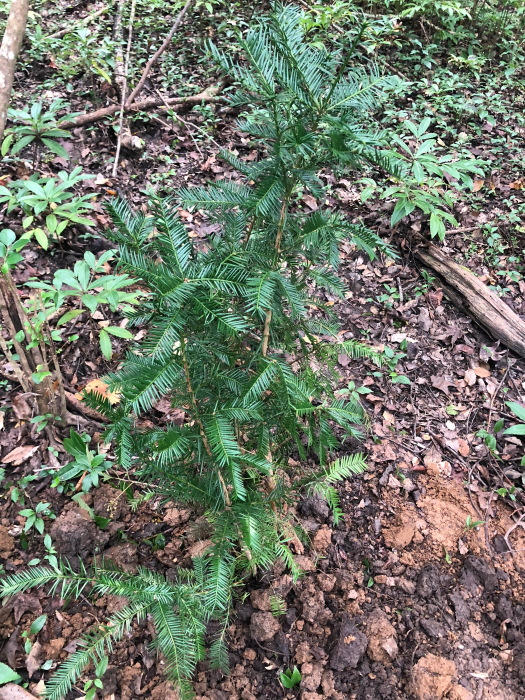Florida Torreya orTorreya taxifolia
Torreya taxifolia, commonly known as the Florida nutmeg, Florida Torreya, gopher wood, stinking yew, or stinking cedar (although not a true yew or cedar), is a very rare and endangered conifer in the yew family found in the Southeastern United States, at the state border region of northern Florida and southwestern Georgia.
The first plantings of Torreya taxifolia are now in Jungle Gardens.
Torreya taxifolia has one of the most restricted natural ranges of any native tree. It is only known from a very small area of bluffs and ravines within Torreya State Park and at the Nature Conservancy Apalachicola Bluffs and Ravines Preserve, located along the east bank of the Apalachicola River in the northern Florida Panhandle and immediately adjacent southernmost Georgia. It is for all practical purposes nearly extinct in its natural habitat.
The population decline is attributed to a Fusarium fungal pathogen that prevents trees from reaching a mature size, thus preventing them from producing viable seeds and may ultimately kill the tree. The population of mature trees declined swiftly after the 1950s. Most trees found are immature and less than 6 feet tall. Fewer than 10 mature trees producing male or female cones are known to exist.
Fungicide treatment has been shown to be effective for fungal infection, with plants showing renewed growth after treatment. Recovery of the species may be hindered by global warming. It appears to be best adapted to the cooler, moister climates. Botanist believe this tree originate much further north and was forced south in advance of the last glaciers. Torreya produces a very large cone containing a single seed that resembles green plum. Chances are once it arrived at its southern destination it was unable to return north in the postglacial warming, due to poor dispersal abilities of the heavy seed.
Some biologists have even suggested that Torreya taxifolia is an evolutionary oddity similar to the Avocado and Osage orange, all of which are thought to have been dispersed by now-extinct animals. The seeds of Torreya taxifolia are extremely hard and require scarification to germinate, which may have been performed by the process of passing through an animal’s digestive tract. The terpene content of the berries and the thinness of the seed’s shell imply that the extinct ecological partner may have been a large tortoise.
Torreya thrives in cultivation and is now being produced commercially by nurseries in several southeastern states. Successful plantings of this species have been on going for many decades at botanical gardens and private estates and now there are mature trees producing seed in several locations including one at the Caroline Dorman Briarwood Nature Preserve in north Natchitoches Parish, Louisiana. The elevated lands of Avery Island appear to be an ideal place for establishing a grove of this rare native cone bearing tree.
Torreya in Jungle Gardens



